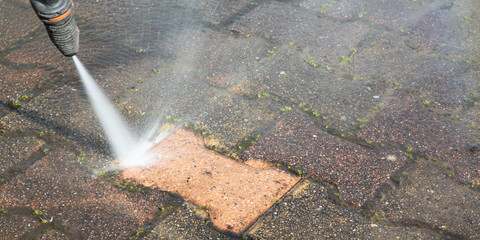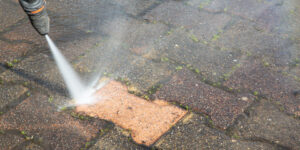Workshop Aziendale can be a powerful tool for training employees. They can help employees understand new software, refine design techniques, or grasp complex management strategies.
They can be as simple as one-time team-building workshops or as intense as four-week engagements. Either way, they can make an impact on employee retention and satisfaction.
A workshop facilitator is a neutral, professional meeting moderator who knows how to engage participants and drive key learning objectives. They transform meeting structure and dynamics to produce better outcomes and inspire lasting change.
Meetings and work cultures can tend to take on a certain rhythm, where people know what to expect from the group dynamic, the type of information that will be shared, and how long it should last. This is often a good thing, but it can also lead to stagnation. When this occurs, a workshop facilitator can bring new energy to the session by being a fresh face and adding personality to the meeting.
They are skilled in using engagement strategies that promote participation from both extroverted and introverted individuals, which helps to encourage collaboration and ideation. They can also manage tensions in meetings when differing opinions are raised. For example, if two employees feel strongly about their points of view on an issue, the facilitator can help them have a productive discussion that is still focused on the company’s goals and objectives.
Workshop facilitation isn’t just for meetings; it can also be useful in projects, training, and other team-based efforts. Having a trained workshop facilitator can increase productivity and provide the right tools for creating and managing effective teams.
When you’re considering hiring a professional workshop facilitator, consider their previous experience in project management, leadership roles, and other types of organizational work. This experience gives them a deeper understanding of the challenges that come with working in groups and the skills to help participants get the most out of their time together.
Additionally, workshop facilitators aren’t invested in the outcome of the meeting and are able to operate from an outside perspective, which can be helpful in promoting unbiased discussions. The key to a successful workshop is making sure that the right people are in attendance. This means that leaders should be invited to workshops along with their direct reports, as they are the ones who will need to learn the new material and disseminate it throughout the company.
Facilitation Tips
Creating a productive environment is a critical aspect of a workshop. A workshop facilitator needs to provide a safe space for participants to share ideas and be open about their feelings. This will ensure that everyone’s voices are heard. To achieve this goal, workshop facilitators can use a variety of techniques, such as icebreakers or group activities.
A good workshop facilitator will set the stage for the session by introducing themselves and clearly explaining the purpose of the event. They will also send an agenda and any required materials to participants ahead of time. Then they’ll create a positive and relaxed environment. They may start with icebreakers and group activities that are fun and engaging. They’ll also provide a range of workshop tools that are easy for participants to use, such as online notetaking and visual thinking tools like Postups and Dot Voting.
The best workshop facilitators stay up to date with facilitation techniques by attending workshops and seminars. They also evaluate their own performance and identify areas for improvement. In addition, they can make the session more productive by incorporating energizing activities that will keep attendees engaged throughout the duration of the workshop.
One of the most important things to remember when running a workshop is that it’s a team effort. It’s essential for the team to collaborate effectively and get on the same page in order to produce a worthwhile outcome. To help achieve this, a workshop facilitator should create a positive and comfortable atmosphere by building trust and teamwork. They should also encourage participants to talk about their feelings and ideas to stimulate discussion and collaboration.
When facilitating a client workshop, it’s also a good idea to include senior leadership representatives from both sides of the table. This will show that the client is taking the exercise seriously and that their leaders are invested in the results. This will also make it easier to implement the outcome of the workshop.
Lastly, a good workshop facilitator will make sure they’re prepared for any unexpected challenges that might arise during the session. For example, they should have a backup plan in case an online tool malfunctions or someone is unable to participate. In addition, they should also have a list of potential questions or concerns that they can use to guide the conversation.
Planning
Corporate workshops can be incredibly valuable for a company’s bottom line and team culture. They can be used to address specific business challenges, generate innovative ideas, and improve products or services. They can also help a company establish a new strategic direction or bring together diverse teams to collaborate and find common ground. However, corporate workshops can quickly derail or fail to meet expectations if they aren’t well-planned.
When a workshop isn’t planned effectively, participants can become confused and disengaged, which will negatively impact the overall event experience and ultimately diminish its value. Ineffective planning can also result in wasted resources, such as time and money spent on activities that do not yield any meaningful results. For these reasons, implementing a structured event management process is essential for success, especially when using Toronto event space rentals for a corporate workshop.
The first step in effective workshop planning is clearly defining the purpose of the session. This will serve as the foundation for all decisions made during the event and set clear expectations for the outcome of the workshop. Defining the purpose of the workshop can be as simple as stating what the goal is for the workshop, such as, “To provide a platform for cross discipline collaboration to uncover new ideas.”
Next, the workshop organizer must determine which discussion points they will cover during the session and how long each will last. This can be difficult to do because the actual conversations will likely take longer than anticipated. Therefore, it is important to be prepared for this unforeseen circumstance and have alternative activities planned should discussions run over their allocated time.
Finally, the workshop organizer must plan out what visual aides they will use to support their discussion points. This includes having the right amount of whiteboards and wall space for activities and ensuring that there is adequate natural light in the room. In addition, it is important to think through what materials may be needed for post-it note activities and to choose a wall texture that is post-it friendly.
Another consideration is whether the workshop will be held in-person or virtual. In-person workshops offer the opportunity to build rapport between the participants and to foster a more collaborative atmosphere, but they are typically more costly and require more extensive travel arrangements. Virtual workshops are increasingly popular because they allow people from different locations to participate in a workshop without incurring additional costs and can be more flexible with scheduling.
Design
The process of designing a corporate workshop will include setting goals, identifying stakeholders, and establishing an agenda. It will also involve researching the client environment and project area in order to gain a deeper understanding of issues that may be discussed during the workshop. In addition, the facilitator will consider the power balance of the group, making sure to include Subject Matter Experts in a balanced mix with business owners who have authority to make decisions. This will help ensure that the workshop stays on track and is able to achieve its desired outcomes.
Another key component of a workshop is the exercises. They need to make logical sense in the order you put them in, complement each other, and fit together like puzzle pieces so that the final outcome answers the initial workshop goal. In addition, the exercises should be fun and engaging. This can be achieved by using innovative techniques such as virtual reality headsets for software training or augmented reality to teach participants about eco-friendly products.
In addition, workshops should be geared towards the audience’s preferences. This will be based on their learning styles, attention spans, and energy levels. In addition, the length of the workshop should be adjusted accordingly to allow for questions and discussions. Finally, the facilitator should ensure that the workshop is not held during a busy time, such as a company event or school hours.
Corporate workshops can be a great way to get your team members in the same room and working as a well-oiled machine. This is especially important for senior management teams who need to be on the same page with one another in order to achieve your organisation’s goals. Our alignment workshops can help your team work together as a cohesive unit and eliminate the internal roadblocks that often cause frustration and wasted time. This will increase productivity, which will translate to increased bottom-line results for your company. Contact us for more information on how we can design a workshop that will benefit your business.




